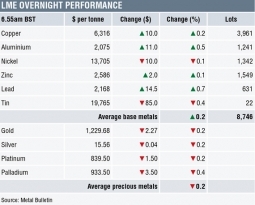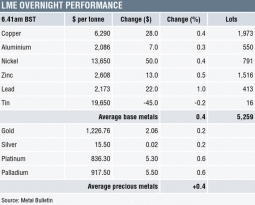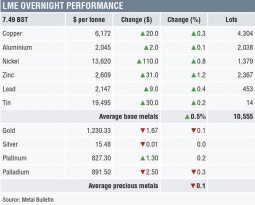The last week of the second quarter saw more aggressive selling as some metal producers and traders rushed to convert inventory into cash.
This has put a downward pressure on prices in many minor metals although the trend was partly masked by seasonally slowing demand. Despite this trend, cobalt continued to trade at a nine-year high, supported by investment buying, but prompting suggestions that its increased cost could lead to reduced usage in battery cathode materials as technology evolves.
Antimony and chromium metal fell to four-month lows this week on cheaper trade sales, but spot volumes were limited. While privately-owned antimony plants in China’s Hunan province remain shut, some producers have liquidated a limited amount of inventory at cut prices to generate revenue for paying wages. Traders also converted stock into cash to repay or raise loans at the financial year-end.
After an almost 29pc cut in the European ferro-chrome benchmark price to £1.10/lb last week, prices for other ferro-alloys that go into stainless steel traded lower in the spot market, as did nickel premium this week. And the US specialty metals producer ATI sounded a cautious note on weaker ferro-chrome and nickel prices in its quarterly forecast.
Ferro-molybdenum prices, which depend on the stainless steel trend and form part of the alloy surcharge, diverged between China and the western markets. In China, prices rose on tighter supply and increased cost of the raw material, while in Europe and the US prices fell amid plentiful availability and lack of spot demand.
The strength of the Chinese yuan, which the People’s Bank of China fixed at an almost eight months high of Yn6.7744: US$ on Friday is yet to have an impact on spot market …
Read More
Source: Metal Pages
WEEK IN REVIEW: Markets expect seasonally slower 3Q
Recent Posts








